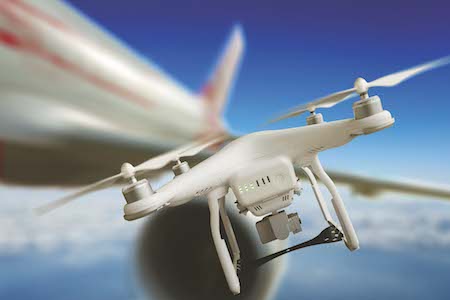It notes that these numbers are in keeping with previous years. As well as examining the accident statistics for the year, and making some recommendations for how to improve safety, it opens by highlighting the benefits of using UAVs at aircraft accident sites.
Benefit of Drones
At an accident site, aerial images have a number of uses. Not only can they capture an image of the entire site from the initial impact point to the final resting position of the wreckage, they show what the surrounding terrain is like and how that might have impacted the pilot, as well as the relative positions of obstacles that may have been struck before hitting the ground. They show ground marks and wreckage distribution in a much clearer manner than ground photography can to accurately demonstrate the manner in which the aircraft collided with the ground.
Previously, the AAIB, just like police units, has been reliant on using helicopters to obtain aerial images, which have their limitations. Not only are they extremely expensive to deploy, but it’s not always possible to capture the correct angle or level of detail required, and they often only arrived a week after the incident. With their prices falling sharply in the past three years, the AAIB has turned its attention to drones instead, purchasing a DJI Phantom 2 Vision in February 2014.
One of the main advantages of using a drone is the ability to obtain an image within minutes of deployment, cutting down on that week-long waiting time common with helicopters. Furthermore, having the accident site investigator being in control of the drone’s camera means that all the angles required can be captured with relative ease – it is tailored to the needs of the investigator.
The AAIB has also experimented with photogrammetry software to create what is known as an orthomosaic – where it has stitched together overhead image that is true to scale – as well as generating 3D models from a series of overlapping images. In September 2015, the AAIB upgraded to the DJI Inspire Pro drone, which allowed for dual controls, one for a pilot and one for the camera operator.
Operation and Deployment
The AAIB is able to able to operate drones at accident sites under normal regulations for recreational users. This is because they are not classed as a commercial operator flying for reward under UK regulations. This means that they have to maintain visual line of sight to the drone, a minimum distance of 50 metres from other people, buildings and vehicles not under their control, and to remain 150 metres from congested areas. It notes that because accident sites are behind a police cordon, these restrictions have not been too limiting to their operations.
Two people are usually required by the AAIB itself to operate the drone. At a site, the engineering investigator will operate the camera, while a member of the engineering support staff controls the flight of the drone. This is to ensure safe flying, as the pilot needs to have their head up, watching the drone in real time in order to properly operate it and avoid any obstacles, while the camera operator (utilising the second part of the dual controls) needs to be heads-down in order to be getting the best pictures for the site report. Single-operator flights are only allowed if the UAV has been programmed to fly an automated route and to automatically take still photos. In this case, the single operator is monitoring the flight and can override the autopilot as a safety feature.


.jpg)
.jpg)
.jpg)

.jpg)


.jpg)

